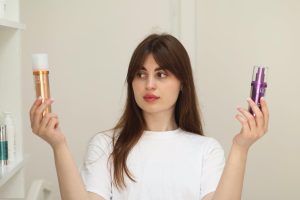Budget Lab Diamonds: Affordable Elegance in Lab-Made Diamonds

In the ever-evolving world of fine jewelry, budget lab diamonds have emerged as a popular alternative to traditional diamonds. As consumers increasingly seek ethically sourced and cost-effective options, lab-made diamonds offer a perfect blend of affordability, quality, and sustainability. This article delves into the unique benefits of lab diamonds, their production process, and how they compare to their natural counterparts.
The Rise of Lab Diamonds
The popularity of lab diamonds has surged in recent years, driven by a growing awareness of ethical and environmental concerns associated with traditional diamond mining. Consumers today are more informed about the implications of their purchases, favoring products that are both sustainable and affordable. Lab diamonds meet these criteria perfectly, providing a stunning alternative without the hefty price tag.
Production Process of Lab Diamonds
Lab diamonds are produced using two primary methods: High-Pressure High-Temperature (HPHT) and Chemical Vapor Deposition (CVD).
In the HPHT method, carbon is subjected to extreme pressure and temperature, mimicking the natural conditions under which diamonds form deep within the Earth. This process produces diamonds that are nearly identical to their natural counterparts.
The CVD method involves placing a small diamond seed in a chamber filled with carbon-rich gas. The gas is then heated, causing the carbon to crystallize on the seed, forming a diamond layer by layer. Both methods yield diamonds that are visually and chemically identical to mined diamonds, making them an appealing choice for consumers.
Affordability and Value
One of the most compelling reasons to consider lab diamonds is their affordability. Typically, lab diamonds cost 20-40% less than natural diamonds of the same quality. This price difference allows consumers to invest in larger stones or higher quality options without stretching their budgets. For couples looking for engagement rings or special occasion jewelry, lab diamonds provide a stunning alternative that doesn’t compromise on beauty.
Ethical Considerations
Lab diamonds are a sustainable choice for environmentally conscious consumers. Traditional diamond mining can have devastating impacts on local ecosystems and communities. In contrast, lab diamonds are created in controlled environments, minimizing ecological disruption. Additionally, the production of lab diamonds eliminates concerns over conflict diamonds, which are mined in war zones and sold to finance armed conflict.
Quality and Brilliance
When it comes to quality, lab diamonds do not disappoint. They undergo rigorous grading processes similar to those used for natural diamonds. The Four Cs—carat weight, cut, color, and clarity—apply to lab diamonds just as they do to mined diamonds. This ensures that consumers can choose lab diamonds with the same quality and brilliance expected from traditional options.
Lab diamonds often display superior clarity, as they are formed in a controlled environment free from the impurities found in some natural diamonds. This results in stones that are not only beautiful but also exceptionally durable, making them ideal for everyday wear.
Variety and Customization
The market for lab diamonds offers an impressive array of options. Consumers can choose from various shapes, sizes, and styles to suit their personal tastes. Whether it’s a classic round brilliant or an elegant princess cut, lab diamonds provide a wide selection that can cater to any preference.
Furthermore, many retailers offer customization services for lab diamond jewelry. Couples can create unique engagement rings or pendants tailored to their specifications, ensuring that each piece is as unique as the love story it represents.
Lab Diamonds vs. Natural Diamonds
While lab diamonds share many similarities with natural diamonds, some consumers remain hesitant due to misconceptions. One significant difference lies in their origin. Lab diamonds are created in weeks, while natural diamonds take millions of years to form. This rapid creation process allows for more transparency in sourcing and pricing.
Another common concern is resale value. While it’s true that natural diamonds often retain higher resale values, the gap is narrowing as lab diamonds gain popularity and acceptance in the market. As consumer awareness grows, lab diamonds are likely to establish their own market for resale.
Conclusion: The Future of Affordable Luxury
In conclusion, budget lab made diamonds represent a revolutionary shift in the jewelry market, providing consumers with affordable, ethical, and high-quality alternatives to traditional diamonds. With their stunning beauty, variety, and sustainability, lab diamonds are poised to redefine the landscape of fine jewelry.





